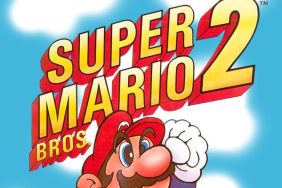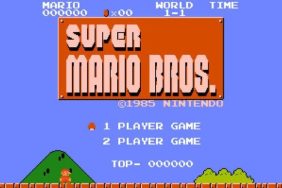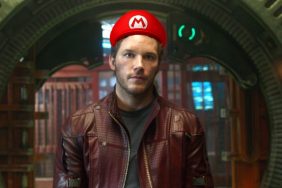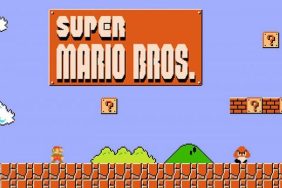Nintendo has a lot riding on the upcoming Super Smash Bros. for Wii U and 3DS. While Mario Kart 8 acted as a defibrillator for the Wii U’s failing heart, Super Smash Bros. will need to keep up that momentum and ensure that it gives players enough reason to keep the dust off of the console until the likes of The Legend of Zelda and Splatoon roll around next year.
For me and many others, Super Smash Bros. Melee is the pinnacle of the series. While Super Smash Bros. Brawl certainly packed in more content and a more interesting range of characters, its gameplay didn’t quite live up to the pacey, frenetic fun of its predecessor, and while it was still a great game, it didn’t consume as many of my waking hours as the Gamecube classic.
Related: Super Smash Bros. Wii U Preview
Now developer HAL Laboratory, under the watchful eye of Nintendo, has the opportunity to better its magnum opus later this year when Super Smash Bros. makes its way onto The Big N’s home and handheld consoles. But what can HAL and Nintendo do to right the wrongs of Brawl and improve upon a near-perfect formula? We’ve got some ideas.
Lessen the power of planking

Nobody likes a planker.
Planking is a tactic that often rears its head in competitive Smash Bros. play, and sees one player (the aforementioned, oft-criticized “planker”) repeatedly ledge-grabbing in order to take advantage of the invincibility that the ledges provide. This wasn’t as much of an issue in Melee, as planking was more difficult to implement into a player’s strategy and plankers could often be stopped in their tracks using an edge-guard. However, in Brawl this tactic was far too common, as characters such as Meta Knight could easily spend the entirety of a match clung to a ledge while their opponent could do little to stop them.
Competitive play is what gives a fighting game its legs past the few months following its release, and while Melee still makes an appearance in the annual Evo fighting game championships, Brawl is nowhere to be seen and planking is partially to blame for its absence. If HAL and Nintendo wants to win back the competitive players it alienated with Brawl, it needs to lessen the impact planking can have in a match, either by reducing each characters’ ability to continually ledge grab, or heightening their ability to form an offense against this sneaky tactic.
Increase the pace of the game a LOT
I’ve always been baffled by Smash Bros. designer Masahiro Sakurai’s post-release thoughts on Melee. He’s previously bemoaned the “destructive” lifestyle he adopted whilst working on the game, tirelessly devoting 13 months of his life to it with very little sleep, and while it’s understandable that this may have led to a little resentment on his behalf, his repeated claims that Melee was too “inaccessible” absolutely do not ring true to me.
The Super Smash Bros. series is intrinsically accessible. It’s the perfect blend of skill and chaos, with it requiring only three attack buttons and its lack of health meters ensuring that even if a player is dominating, they can still find themselves succumbing to a less experienced opponent by way of accidentally falling off the edge of an arena. Melee suited the play style of both the casual and the competitive player, whereas Brawl only appealed to the former. Sakurai’s admission that the next SSB‘s gameplay speed will fall directly between both games has me concerned, because I’m of the opinion that the pacing in Melee was perfect, and anything less than that is a step in the wrong direction.
Beneath its cuddly exterior there was a great deal of complexity in Melee‘s mechanics, something which was likely lost upon those who merely played it whilst sitting on their couch with a few buddies. Take a look at this great set of matches between GC Silent Wolf and MDR RZR Axe at Evo 2014 for evidence of this:
Chances are that the majority of casual Melee players wouldn’t even know that the tactics implemented in the game on a professional level existed unless they saw video footage of it, and this is where I think Sakurai’s opinion on the supposed inaccessibility of Melee falters; the game is as simplistic/complex as the player wants it to be. Altering the game’s pace wouldn’t change the approach of those who aren’t well-versed in each characters’ various strategies, but it would diminish the lasting appeal for those who plan to spend hours upon hours mastering it.
Put more effort into online play

The one thing that let Mario Kart 8 down was its online component. While it’s understandable that Nintendo would want to shelter its younger fans from the trash-talking that typically ensues in online multiplayer games, that they also chose to disable in-game chat in private matches was frustrating to say the least, and the lack of different game modes made for a very minimalist experience. Hopefully Nintendo hasn’t placed the same kind of restrictions upon HAL Laboratory, and will let the developer cater to both the series’ young and adult fans.
Related: Lucina, Captain Falcon, Robin, and Chrom Join the Roster
The biggest priority is the in-game chat. Talking through the Wii U GamePad’s microphone was a surprisingly competent method of communication, and this should be implemented in Super Smash Bros. Even if players opt to not use the GamePad to play the game, it could still sit in its stand and allow players to talk with their friends whilst they’re kicking Kirby’s spherical butt (does Kirby even have a butt?) with the GameCube controller instead.
Aside from this, online play in SSB should receive a major overhaul in general following the travesty that was Super Smash Bros. Brawl‘s online component. Those who dared to brave Brawl‘s online play found themselves stuck in an infinite loop of long wait times and lag-infested gameplay, so we hope that HAL Laboratory has learn from its mistakes and provides a fully-realized, competent online multiplayer experience to sit alongside the series’ accomplished local play.








